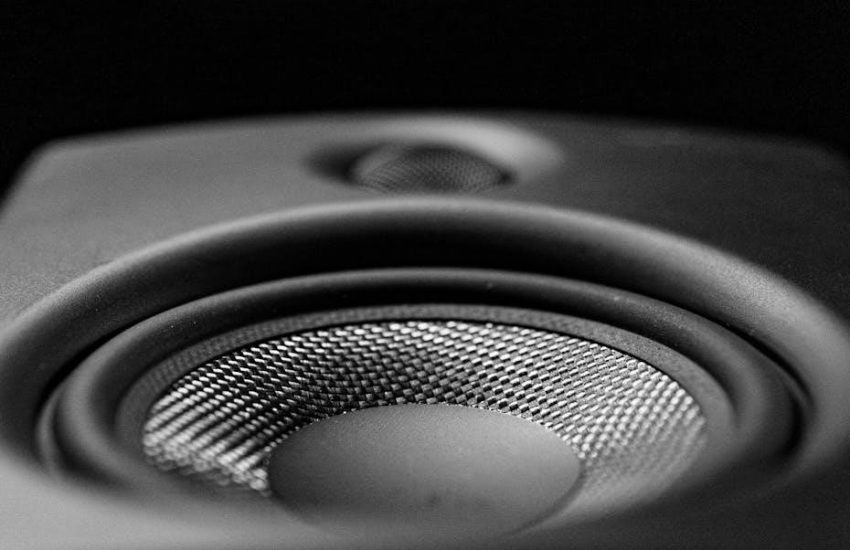ar 15 owners manual
AR-15 Owners Manual⁚ A Comprehensive Guide
Welcome! This manual provides essential information for AR-15 owners. It covers safety, operation, maintenance, and troubleshooting. From loading to cleaning, this guide ensures responsible firearm ownership. Understand your rifle for safe handling and optimal performance.
The AR-15 is a lightweight, semi-automatic rifle known for its modularity and versatility. Initially designed for military use, it has become a popular platform for sport shooting, hunting, and home defense. Its direct impingement gas system cycles the action, chambering a new round with each shot. The rifle’s popularity stems from its customizable nature, allowing users to adapt it to various needs with ease.
Understanding the AR-15’s components is crucial for safe operation and maintenance. Familiarize yourself with the upper and lower receivers, the bolt carrier group, and the fire control group. Proper knowledge of these parts will aid in disassembly, cleaning, and troubleshooting; This manual provides a comprehensive overview to help you become proficient with your AR-15.
Remember, responsible ownership includes understanding the firearm’s mechanics and adhering to safety guidelines. This guide will empower you to confidently handle and maintain your AR-15.

Safety Precautions
Firearm safety is paramount. Always treat every AR-15 as if it’s loaded. Keep the muzzle pointed in a safe direction. Store your AR-15 securely and unloaded, away from unauthorized individuals.
General Firearm Safety Rules
Adhering to general firearm safety rules is crucial for responsible gun ownership and preventing accidents. Always treat every firearm as if it is loaded, even if you believe it is not. Never point the muzzle at anything you are not willing to destroy, maintaining a safe direction at all times. Keep your finger off the trigger until your sights are on the target and you have made the conscious decision to shoot.
Be certain of your target and what is beyond it, ensuring a safe backstop and awareness of potential hazards. Store firearms securely, unloaded, and separate from ammunition, in a locked location inaccessible to children and unauthorized individuals. Use and store ammunition correctly. Regularly inspect your firearms to ensure they are in proper working condition.
Wear appropriate eye and ear protection when shooting to prevent injury. Avoid alcohol or drug use before and during firearm handling. Familiarize yourself with the specific operating procedures and safety features of each firearm you use. Never modify a firearm without consulting a qualified gunsmith. Seek professional training to improve your shooting skills and knowledge of firearm safety.
Specific AR-15 Safety Considerations
Beyond general firearm safety, the AR-15 platform has unique considerations. Always ensure the AR-15’s muzzle is pointed in a safe direction during all handling procedures, including loading, unloading, and disassembly. Before cleaning or maintenance, verify the rifle is unloaded by visually inspecting the chamber and magazine well. Understand the AR-15’s modularity, ensuring all components are correctly installed and compatible.
Be aware of the potential for slam fires, where a round ignites upon chambering. Use only factory-new or properly reloaded ammunition from reputable sources. When disassembling the AR-15, control the takedown pins and detent springs to prevent loss or injury. Ensure the safety selector is functioning correctly, preventing accidental firing.
Regularly inspect the bolt carrier group for wear or damage. Be cautious of over-gassing, which can cause malfunctions and increase wear. Always use appropriate eye and ear protection. Seek professional guidance on AR-15 customization. Always adhere to safe firearm handling practices specific to the AR-15 platform.
Operating Procedures
This section details AR-15 operation. Learn proper loading, unloading, and firing techniques. Understand magazine insertion, charging, and safety engagement. Master these procedures for safe and effective AR-15 handling at all times.
Loading and Unloading
Safe loading and unloading are paramount for responsible AR-15 handling. Always ensure the firearm is pointed in a safe direction. Verify the AR-15’s safety selector is set to “safe” before commencing any loading or unloading procedures.
To load, insert a magazine firmly into the magazine well until it locks. Pull the charging handle fully to the rear and release it, chambering a round. Ensure the bolt is fully forward. Your AR-15 is now loaded and ready to fire (when the safety is disengaged).
To unload, first, engage the safety. Remove the magazine by pressing the magazine release button. Cycle the charging handle repeatedly to eject any rounds in the chamber. Visually inspect the chamber to confirm it is empty. Only then is the firearm considered unloaded.
Always double-check the chamber after unloading. Follow these steps meticulously to prevent accidents and maintain firearm safety. Practicing these procedures regularly will build confidence and ensure safe gun handling practices.
Firing the AR-15
Before firing your AR-15, ensure you are on a designated range or in a safe, controlled environment. Always wear appropriate eye and ear protection. Verify your target and backstop are clear of obstructions and bystanders. Understand your local laws and regulations regarding firearm use.
Grip the rifle firmly, placing your finger along the receiver until ready to fire. Disengage the safety selector. Align your sights on the target. Gently squeeze the trigger, maintaining a steady hold. Avoid jerking or anticipating the recoil.
After each shot, maintain your sight picture and prepare for the next shot. If the rifle fails to fire, follow troubleshooting procedures. Once finished firing, engage the safety, remove the magazine, and clear the chamber. Inspect the firearm for any damage or malfunctions.
Responsible firearm ownership includes practicing safe firing techniques and understanding the AR-15’s capabilities. Familiarize yourself with trigger control, breathing techniques, and proper stance for improved accuracy and control. Regularly practice to maintain proficiency.

Maintenance and Cleaning
Regular maintenance ensures optimal AR-15 performance and longevity. This section covers disassembly, cleaning, lubrication, and assembly procedures. Proper care prevents malfunctions and maintains accuracy. Follow these steps for a reliable firearm.
Disassembly Procedures
Before beginning any disassembly, ensure the AR-15 is unloaded and safe. Remove the magazine and visually inspect the chamber. Point the rifle in a safe direction throughout the process.
First, push out the rear takedown pin, allowing the upper receiver to pivot forward. Then, remove the charging handle and bolt carrier group. Next, separate the upper receiver from the lower receiver by pushing out the front takedown pin.
To disassemble the bolt carrier group, remove the firing pin retaining pin, followed by the firing pin. Rotate and remove the bolt. Finally, detach the extractor and ejector.
For the lower receiver, carefully remove the buffer and buffer spring. The trigger group and other components require specialized tools and should only be disassembled by qualified individuals. Always consult your AR-15’s specific manual for detailed instructions and safety precautions before disassembly. Proper disassembly is crucial for effective cleaning and maintenance, ensuring your AR-15 operates reliably.
Cleaning and Lubrication
Regular cleaning and lubrication are crucial for AR-15 reliability. After disassembly, begin by removing carbon fouling from the bolt carrier group and bolt using a solvent and brush; Pay attention to the bolt face, gas rings, and inside the carrier.
Clean the upper and lower receivers with a brush and solvent, removing any dirt or debris. Use patches to clean the barrel, starting from the chamber end. Repeat until patches come out clean.
After cleaning, apply a thin layer of lubricant to key areas⁚ the bolt carrier rails, bolt, charging handle, and trigger components. Avoid over-lubrication, which can attract dirt.
Reassemble the AR-15 following the assembly procedures. Function-check the rifle to ensure proper operation. Consistent cleaning and lubrication prevent malfunctions and extend the lifespan of your AR-15. Always refer to your specific AR-15 manual for recommended cleaning products and lubrication points. Proper maintenance ensures safe and reliable performance.
Assembly Procedures
After cleaning and lubrication, proper assembly of your AR-15 is crucial. Start by inserting the bolt carrier group into the upper receiver, ensuring it moves smoothly. Attach the charging handle, locking it in place.
Next, connect the upper and lower receivers, securing them with the takedown and pivot pins. Ensure these pins are fully seated. Install the buffer and buffer spring into the buffer tube, then attach the stock.
Reassemble the fire control group, including the trigger, hammer, and disconnector, ensuring proper alignment. Attach the pistol grip securely. Finally, reattach the magazine release and bolt catch, verifying their functionality.
Perform a function check to ensure all components operate correctly. Cycle the action, check the trigger reset, and verify the safety selector engages properly. If any issues arise, consult a qualified gunsmith. Proper assembly ensures safe and reliable operation of your AR-15. Always refer to your specific AR-15 manual.

Troubleshooting
This section addresses common AR-15 malfunctions. Learn to identify and resolve issues. Proper maintenance minimizes problems. Consult a gunsmith for complex repairs; Safety first, always unload before troubleshooting.
Common Malfunctions and Solutions
Addressing malfunctions is crucial for safe and reliable AR-15 operation. A common issue is failure to feed, often caused by a dirty magazine or faulty ammunition. Inspect and clean magazines regularly. Use high-quality ammunition to prevent this issue. Another frequent problem is failure to eject, which can stem from a dirty chamber or extractor issues.
Thoroughly clean the chamber and check the extractor for damage. Failure to extract can also be caused by a weak extractor spring. Replacing the spring can often resolve this. Double feeds occur when two rounds are simultaneously stripped from the magazine. This typically indicates a magazine problem or a bolt-over-base malfunction. Ensure the magazine is properly seated and in good condition. Stovepipes, where a spent casing gets caught in the ejection port, are often due to weak ammunition or a worn extractor.
Try different ammunition and inspect the extractor. Light primer strikes, where the round doesn’t fire, can be caused by a dirty firing pin or faulty ammunition. Clean the firing pin and try different ammunition. If problems persist, seek assistance from a qualified gunsmith.

Warranty Information
Radical Firearms provides a lifetime warranty on all products they manufacture, ensuring long-term customer satisfaction. This warranty covers defects in materials and workmanship for as long as you own the product. FosTecH offers warranties on their triggers, including the Echo AR II, safeguarding against manufacturing defects. Standard Manufacturing also stands behind their firearms, offering warranties on their tactical and classic models.
It’s crucial to register your AR-15 with the manufacturer to activate the warranty. Keep your purchase receipt as proof of ownership. The warranty typically doesn’t cover damage from misuse, unauthorized modifications, or neglect. For warranty claims, contact the manufacturer directly. They will provide instructions on how to return the firearm for inspection and repair or replacement. Remember to follow all safety precautions when handling and shipping any firearm. Always check with the specific manufacturer for precise terms and conditions.


